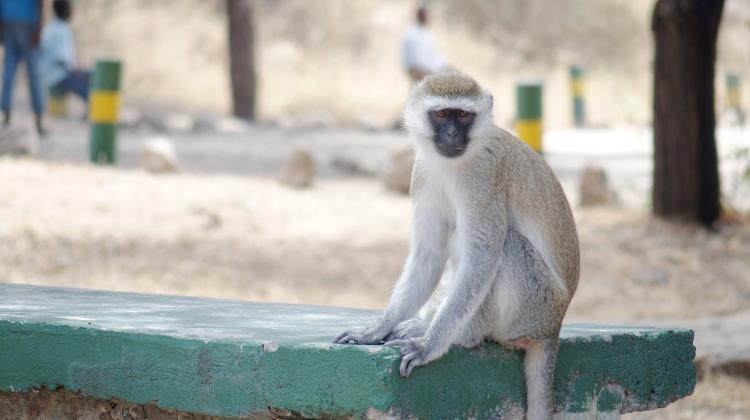Wild raids and stalking. We know more about the escape distance of monkeys
 Photo: Fotolia
Photo: Fotolia
Living near humans can have benefits, such as plenty of food - but it can also pose a big threat. But monkeys know well how to assess the risk and when to flee.
This has been confirmed by a new study conducted in African cities where monkeys are a tourist attraction, and in villages where they are a nuisance for farmers. Researchers present their conclusions in "Behavioral Processes".
The authors of the publication are: Peter Mikula from the Charles University in Prague (Czech Republic), Gabriel Saffa from the University of Prešov (Slovakia), Emma Nelson from the University of Liverpool (UK) and Piotr Tryjanowski from the University of Life Sciences in Poznań.
The study focused on vervet monkeys (that have made their contribution to science, for example in the context of AIDS and resistance research).
Vervet monkeys in city parks are bold animals that dig in the rubbish and approach people to beg for snacks.
"Living in cities is not a necessary a bad thing for them. Looking at the number of their young in parks, you would think that all this extra food that people leave as trash is paradise on earth for vervet monkeys. The benefits of using such food can be short-term but - apart from the risk of disease transmission - living near people does not cost these monkeys anything" - says Prof. Tryjanowski.
Life in the countryside is a different story. Monkey hordes that raid the fields and destroy crops are by definition treated as pests. Uganda farmers react to them like Polish farmers would to a polecat or a fox. "People persecute them: they throw stones at them, shoot firearms, chase them with cars" - says Prof. Tryjanowski.
The key issue for scientists is whether and how monkeys adapt to such different realities. The monkeys' reactions to humans can be compared, it just takes some patience and a lot of walking. From a technical point of view, this requires scientists to repeat the following actions: look for a monkey and calmly approach it. Scientists check the distance at which the monkey loses its nerve. This key moment determines the flight initiation distance (FID) - the smallest distance to which a resting or eating vervet monkey allows you to approach it.
Professor Tryjanowski and his colleagues examined 83 monkeys in cities (Kampala, Entebbe, Masaka and Hoima) and villages.
The study confirmed that monkeys in the rural landscape do not allow people to come closer than 200 meters. "They flee at the sight of a man in a distance - it is basically enough to look at them. They treat people as predators; they are afraid of them, they feel great respect - says Prof. Tryjanowski. - But in cities, especially in the capital, Kampala, and in nearby parks they are trusting to the extent that their FID is only about 10 m. They behave as if they were domesticated. Vervet monkeys from the park in Kampala sometimes even approach people and beg for food. That is unfortunate, because a wild animal's close contact with a human being is not a good thing".
The authors of the publication emphasize that in the case of monkeys, the conclusions from the study are important in the context of protection. "Such forced closeness to humans has considerable consequences for animals. Firstly, the consequences associated with escape that means stress and energy expenditure for animals. The epizoological consequences are equally important. People can get infected from monkeys, and the other way around - monkeys can get infected from us, from people, especially tourists coming from Europe" - emphasises Prof. Tryjanowski.
FID has already been tested in various groups of animals, including reptiles, rodents, ungulates, predators and birds. Prof. Tryjanowski and colleagues studied birds living in urban and rural areas and at different latitudes.
They used the same working method to study vervet monkeys. Co-author of the publication in "Behavioral Processes" Dr. Emma Nelson points out that there is an absence of FID studies in primates. And this is a special group of animals, if only because of highly developed cognitive and adaptive abilities.
"All theoretical models predict that organisms with large brains - primates - should identify threats on the principle that they know when to run and when they do not have to. This has been confirmed" - says the zoologist from the University of Life Sciences in Poznań.
PAP - Anna Ślązak
zan/ agt/ kap/
tr. RL
Przed dodaniem komentarza prosimy o zapoznanie z Regulaminem forum serwisu Nauka w Polsce.















